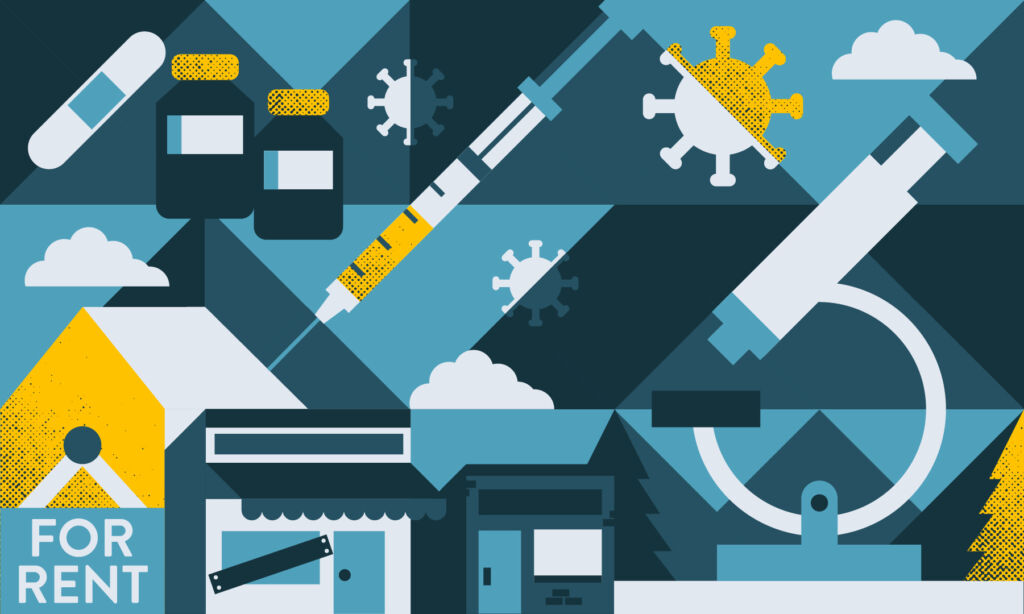Details on EI eligibility and how to apply can be found online here. Government information on support for those who don’t qualify can be found here.
In only a few short months, the COVID-19 virus has thrown the world into crisis, putting pressure on families, communities, national economies and their health care and social security systems. The uncertainty affects everyone, but it has been ramped up especially high for workers who are being asked to self-quarantine if they feel sick or have come into contact with someone who has been confirmed with the new coronavirus.
I’ve rapidly produced a new report looking at how well Canadians workers are placed to weather this storm.
For some, working from home or taking paid time off is not a problem. In 2019, 74% of Canada’s highest paid workers had their leave from work paid for by an employer. But for many, many others, this is not an option.
Only 38% of sick leave and 23% of family responsibility leave in Canada is paid. If they are lucky, lower-to-middle income workers will be able to use their paid vacation time in the event of quarantine, though of course this is not ideal. In contrast, only 14% of the leave taken by Canada’s lowest income workers was paid leave, vacation included, in 2019.
We can further break these numbers down by sector, gender, geography and job classification.
As you might expect, workers in certain industries more heavily exposed to infection are the least likely to be able to work from home and the least likely to have their leave paid for by an employer. Accommodation and food services, retail, and a broad category including janitors, temporary workers, tour operators and travel agencies, fall into this category, with only 19%, 37% and 32% of leave paid for respectively.
Most women in Canada work in the “5C” occupations: clerical, cleaning, catering, cashiering and care (e.g., health care, child care, long-term care). While clerical workers might be able to work from home, the other jobs are by nature in-person. In addition, three of these professions (care, catering and cleaning) are going to be on the frontlines of combatting the virus. Truck drivers, equipment operators and building trades workers, the largest male professions , aren’t as directly exposed to the virus as 5C female workers, but they also can’t do their jobs from home.
Employment insurance is not ready for COVID-19
Workers without much (or any) paid leave must turn to employment insurance for income in the event of quarantine or COVID-19-related shutdowns and layoffs. However, only 33% of unemployed women and 38% of unemployed men received EI benefits in 2018. For previously self-employed or part time workers it's even worse, with only one in five receiving EI benefits.
The main reasons why someone would not receive EI, despite being unemployed, is that they have not worked recently (e.g., a parent returns to work after taking parental leave), they did not log enough hours to qualify (currently 600 hours in a year), or they are not paying EI premiums (often due to self-employment or gig economy work). Yet all are put under duress by the precarious economic situation caused by COVID-19.
Last week, the government announced it would eliminate the one-week waiting period for the EI sickness benefit (which can be accessed if in quarantine) and double the maximum work-sharing length where EI can substitute for missing shifts. These changes, while welcome, do not come close to plugging the huge gaps in access to EI benefits for the potentially tens, if not hundreds of thousands of workers who may need them during the coronavirus outbreak.
In my report, I recommend the government at least match the more extensive EI changes that were rolled out when the SARS crisis hit in 2003, and then go even further. The sick note requirement for accessing EI sick benefits should be removed and the definition of “quarantine” expanded to cover not only official quarantine, but self-quarantine and employer enforced quarantine. We should also create an emergency benefit for people who do not presently qualify for EI.
Furthermore, the EI work-sharing provision must be promoted to employers and employees much more proactively to encourage take-up. As recommended in the Alternative Federal Budget, we should also drop the number of hours to qualify for EI regular and sickness benefits, from the current 600 down to 360 hours. Finally, let’s set up a COVID-19 EI hotline and ensure that EI benefits drawn as a result of the virus don’t impact eligibility for other EI benefits in the future.
The COVID-19 pandemic has exposed the need to improve paid leave for low and middle income Canadians who are employed and make our EI system more responsive and generous for those who are unemployed. The time to act is now.
David Macdonald's report, COVID-19 and the Canadian Workforce, is available for download here.







